By 2011, the rich legacy of Matsés healing knowledge was on the verge of being lost forever. That year, we visited one of the last remaining Matsés master shamans, Antonio Manquid Jiménez Tafur, in his village of Nuevo San Juan on the upper reaches of the Galvez River. Antonio took us along a winding trail in the rainforest at the edge of the village to see the traditional medicinal agroforestry site that his father had planted decades earlier.
Antonio’s father was renowned as perhaps the greatest Matsés shaman of memory, but Antonio lamented that he had not learned all of his father’s medicines before he passed away.
But something else troubled him deeply: none of the Matsés youth showed any interest in learning the traditional Matsés knowledge of medicinal plants from the rainforest.
The Matsés live in one of the most biodiverse rainforests in the world and have accumulated a wealth of knowledge and techniques of treatment that are a product of their deep ties to the natural world. For centuries, the Matsés healing system was passed on through oral tradition, with Matsés healers taking on apprentices who would eventually take on apprentices of their own.
After enduring more than a century of violent conflict with frontier settlers and government soldiers encroaching onto their land, in 1969, the Matsés finally accepted the overtures of missionaries. In the decades that followed, more and more Matsés youth, through the influence of missionaries and commonly facing racism and discrimination in dealings with the outside world, became ashamed of their identities and lost interest in their culture.
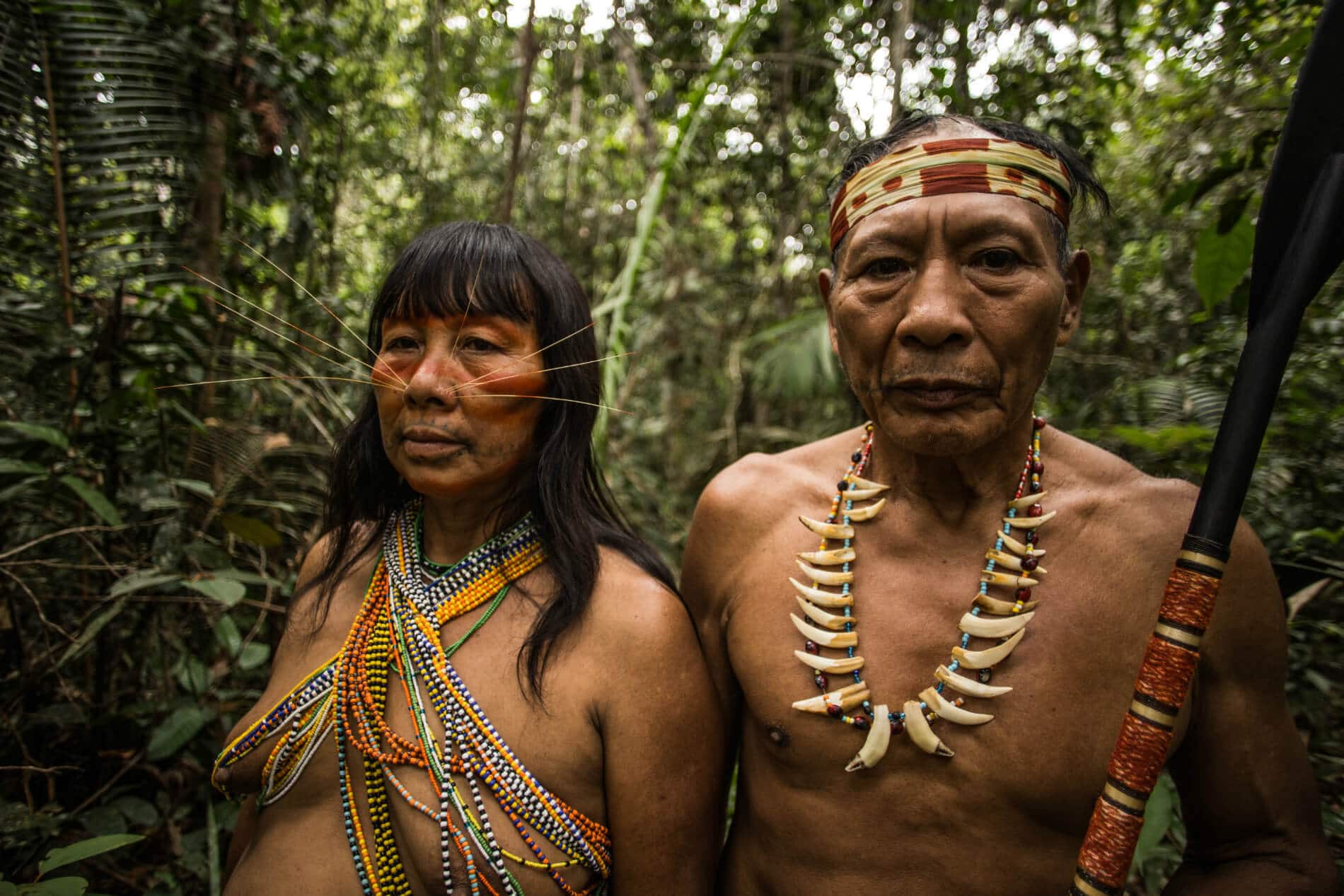
Matsés plant master Roberto Tumi Nëcca Unan and wife. Photo: Tui Anandi / Mike van Kruchten / Xapiri.
In 2011, none of the remaining Matsés healers had apprentices to learn from them.
With each passing of an elder, the ancestral healing knowledge of the Matsés would edge ever closer toward extinction. Yet at the same time, most villages still actively depend on the medicinal plant knowledge of the few remaining living healers as their primary source of health care.
Once the Matsés lost their endemic healthcare system, the tribe’s self-sufficiency would never fully recover and their communities would be forced to depend on the limited and low-quality health care services available to such remote and difficult-to-access locations.
Even today, health outposts in Matsés territories run chronically short on even the most basic medications. Acutely ill Matsés are evacuated by plane to the regional public hospital in Iquitos, where they too often languish and die, away from their communities, food, language and kin. The cost of repatriating remains is often prohibitively expensive for Matsés families.
The remaining Matsés elders who valued and guarded their ancestral healing knowledge understood what was at stake–and they were ready to pass on their knowledge.
The following year, in 2012, we were invited to visit the Matsés communities along the Chobayacu River, in the heart of their territory—ia region that was at the time closed off to outsiders.
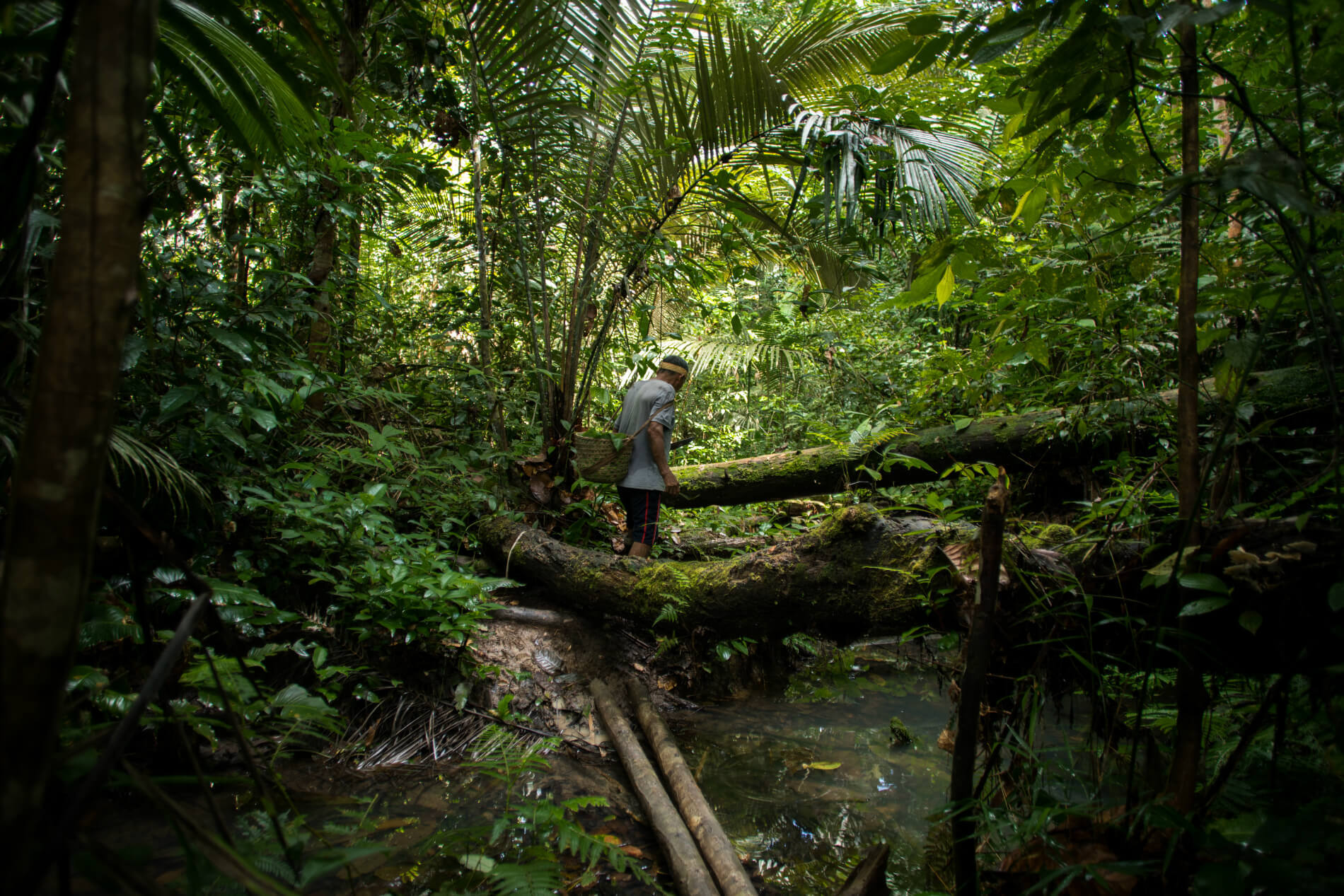
A Matsés healer crossing a jungle stream. Photo: Tui Anandi / Mike van Kruchten / Xapiri.
Village by village, we met with the Matsés to learn about their aspirations and troubles. From these community meetings, the Matsés elders and the organization we subsequently founded, Acaté Amazon Conservation, developed a three-point plan of action to ensure their traditional system of health would endure for future generations as they adapt to the new realities of the outside world.
The first phase of this revitalization was a concrete step that involved the creation of a written encyclopedia.
The written form of the Matsés language was articulated after contact with missionaries, who were intent on producing a Matsés version of the Bible. The Matsés would now apply these skills to document their own ancestral knowledge.
Each chapter of the encyclopedia would be written by an elder healer, chosen by the community. The elders were paired with two younger Matsés who would record the knowledge in a notebook, photograph each plant, and digitize and edit the entries using a laptop.
This novel approach would prove to be an innovative way to protect their knowledge from theft by the outside world. History is replete with examples of theft from Indigenous peoples. For the Matsés, the threat was all too real.
The skin secretions of the giant monkey tree frog (Phyllomedusa bicolor), known as acate, are used in hunting rituals by the Matsés. The secretions, rich in a diversity of bioactive peptides, are administered directly into the body through application into fresh burn wounds made on the skin. Within moments, the toxins induce intense cardiovascular and autonomic responses, ultimately leading to a state of altered consciousness and heightened sensory acuity. For the Matsés, ceremonial use of acate confers not only strength and courage to an individual; it also serves as a medium for transmitting knowledge among participants.
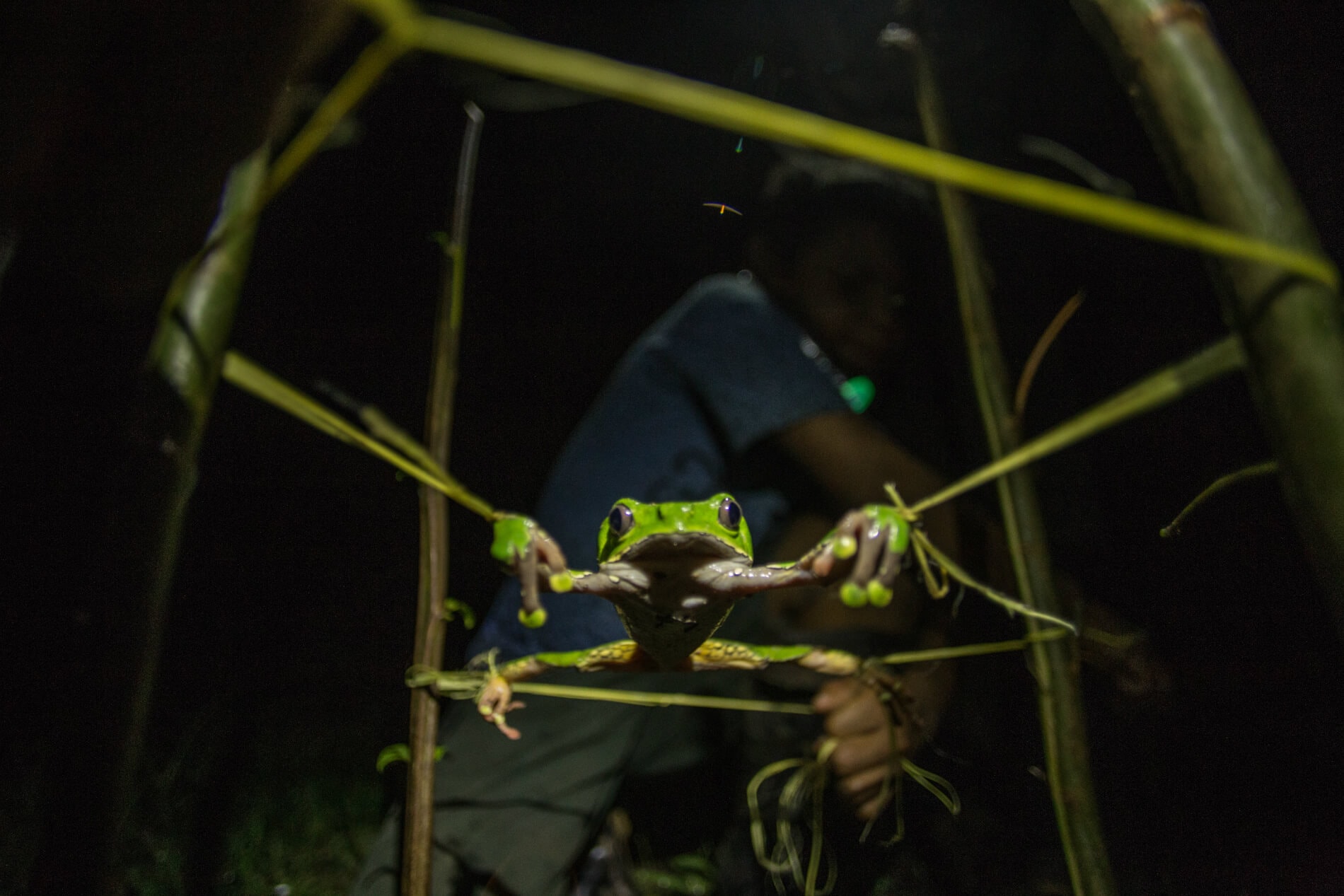
The preparation of acate. The frog is released unharmed following extraction of its skin toxins. Photo: Tui Anandi / Mike van Kruchten / Xapiri.
After reports of the Matsés use of acate emerged from the forest, laboratory investigations of samples of the frog’s secretions taken from Matsés territory revealed a complex cocktail of peptides with bioactive properties. Several patents were filed for applications on these peptides, without recognition of the Indigenous Peoples for whom acate held a unique and important role.
Sadly, the story of Matsés misappropriation of knowledge from the Matsés did not end there. Recent years have seen the emergence of the global phenomenon of the use of acaté frog secretions (referred to colloquially as sapo or kambo) in far-away cities like Los Angeles and London, hyped by media interest focused on the novelty of ‘jungle medicine’ but with little concern for the day-to-day health care realities of the Matsés themselves.
“I do not agree with acate leaving our lands. The outside people are misappropriating our traditional practices,” comments Antonio Manquid Jiménez Tafur, a Matsés elder.
In May 2015, after more than two years of intensive work, the first volume of the Encyclopedia was finalized during a historic meeting of the remaining Matsés elder healers in the Matsés village of Puerto Alegre on the upper reaches of Javari river.
The Encyclopedia was drafted, typed up, reviewed, and edited entirely by the Matsés themselves.
This is what made the initiative so revolutionary. There were no outsiders coming in to document their knowledge, no ethnobotanical expeditions, and no translations. The entire encyclopedia was written by the Matsés in their own villages, in their own words, and in their own language.
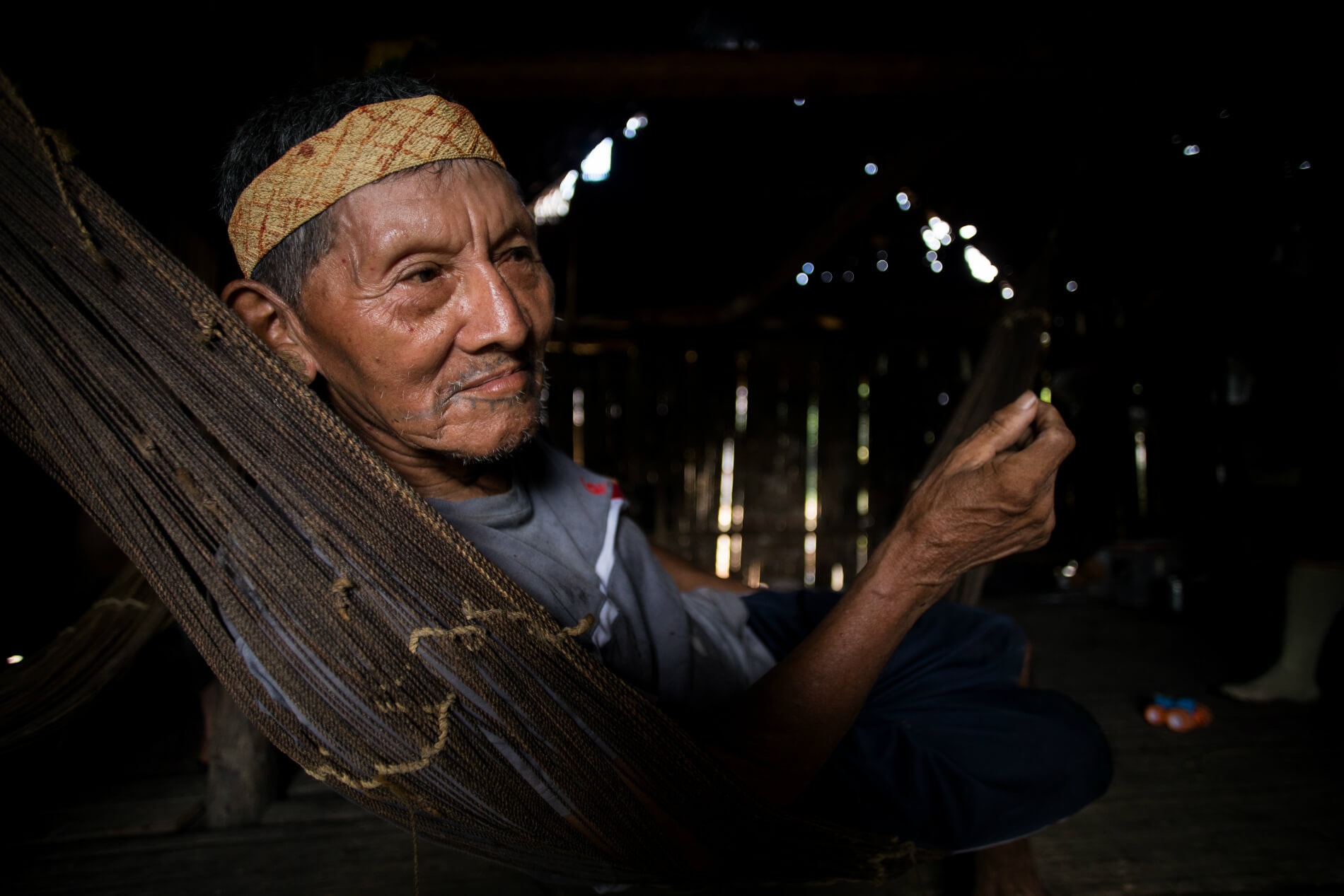
Matsés elder and healer, village of Santa Rosa, Chobayacu river. Photo: Tui Anandi / Mike van Kruchten / Xapiri.
Production of the first indigenous medicine encyclopedia received worldwide attention through an interview in Mongabay, inspiring other Indigenous groups and conservation organizations to begin similar projects.
Without public announcement and fanfare, the Matsés leaders, elders and communities set-out quietly to continue their work in the creation of a second volume comprising an additional five chapters. Two years later, Volume II of the Matsés Traditional Medicine Encyclopedia was completed.
The two volumes of the encyclopedia comprise collectively 1,048 pages. They are hardbound and they are beautifully illustrated.
The Matsés universally agreed that the Encyclopedia was a critical first step towards mitigating the existential threats to Matsés healing wisdom and self-sufficiency in health. They knew, however, that the Encyclopedia by itself would not be enough to maintain their self-sufficiency.
The Matsés indigenous healing systems, like all healing systems, are based on deep experiential knowledge and skills that can only be transmitted through long apprenticeships.
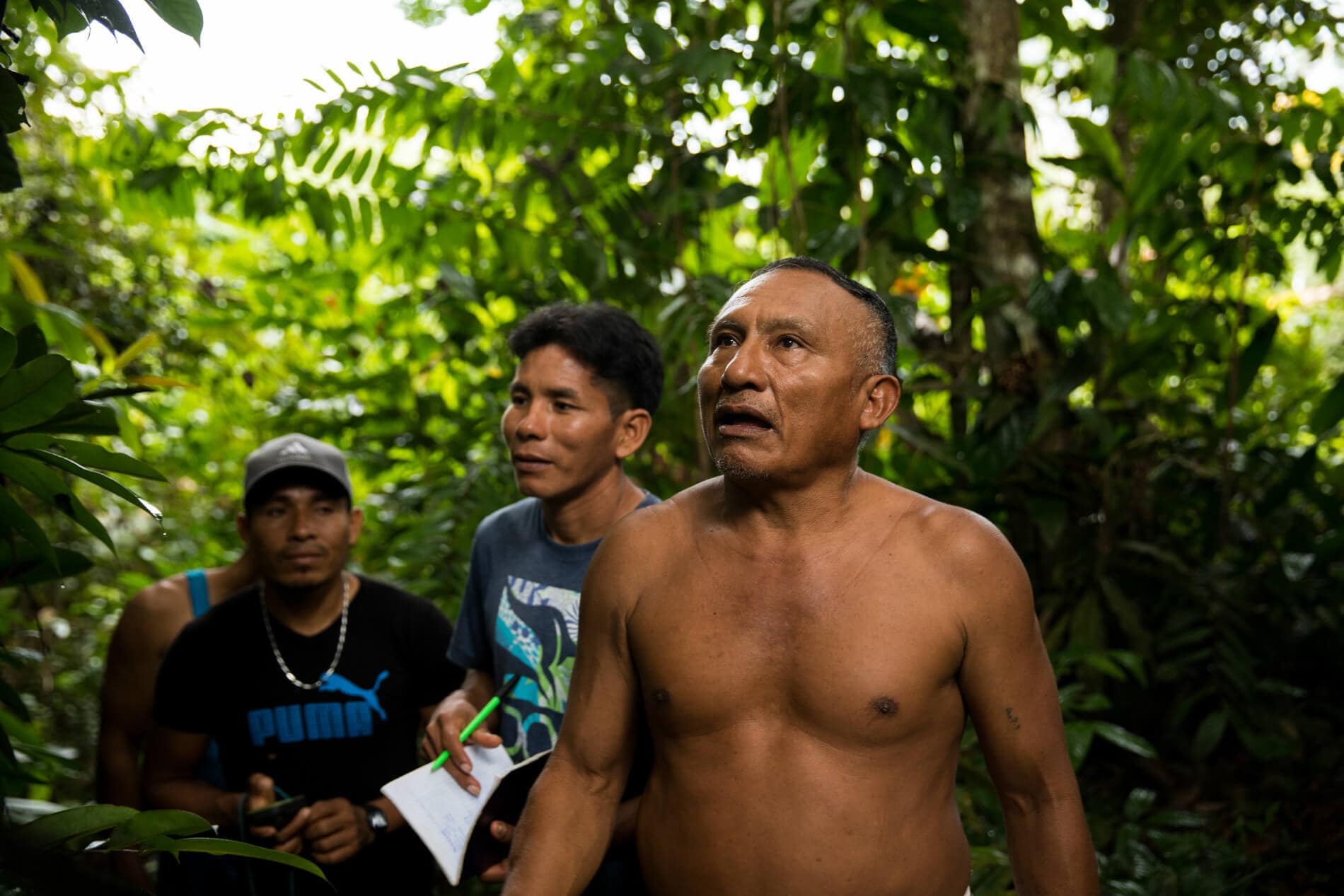
Matsés master plant healer Antonio Manquid Jiménez Tafur leads apprentices along the medicinal agroforestry trail established by his father in the rainforest outside his village of Nuevo San Juan on the Galvez River. Photo: Tui Anandi / Mike van Kruchten / Xapiri.
The framework of Phase II of the Traditional Medicine Initiative involves the creation of Healing Forest Medicinal Plant Gardens, based on traditional adaptive Matsés agroforestry.
For many, the term ‘medicinal garden’ might connote images of a sun-exposed garden adjacent to a house or a farm clearing. What the Matsés are doing is different. Many of the rainforest vines, tree saplings, ferns and fungi that the Matsés use daily for healing will not grow in sun-exposed gardens. They require rainforest ecosystems for their propagation, adding considerable levels of complexity and challenge. Successfully transplanting and establishing these plants in the rainforests is not easy–it requires a master’s understanding of the ecosystems for successful cultivation.
On cursory glance, a Healing Forest might appear to be a natural stretch of ordinary rainforest along a footpath to their farms. In the presence of a master shaman pointing out the medicinal plants, however, you come to realize that you are surrounded by a constellation of medicinal plants cultivated by the Matsés healers for use in treatment of a diverse range of ailments. Each Healing Forest contains literally hundreds of different medicinal plant species. The plantings are often in such density that truly careful attention must be made to avoid clumsily stepping on growing seedlings or a young sapling.
The creation of a Healing Forest agroforestry plot in a community is no small effort, taking at least one month of full time work by an entire team that consists of one elder shaman, at least 6 apprentices, and one Matsés coordinator who is usually an experienced apprentice.
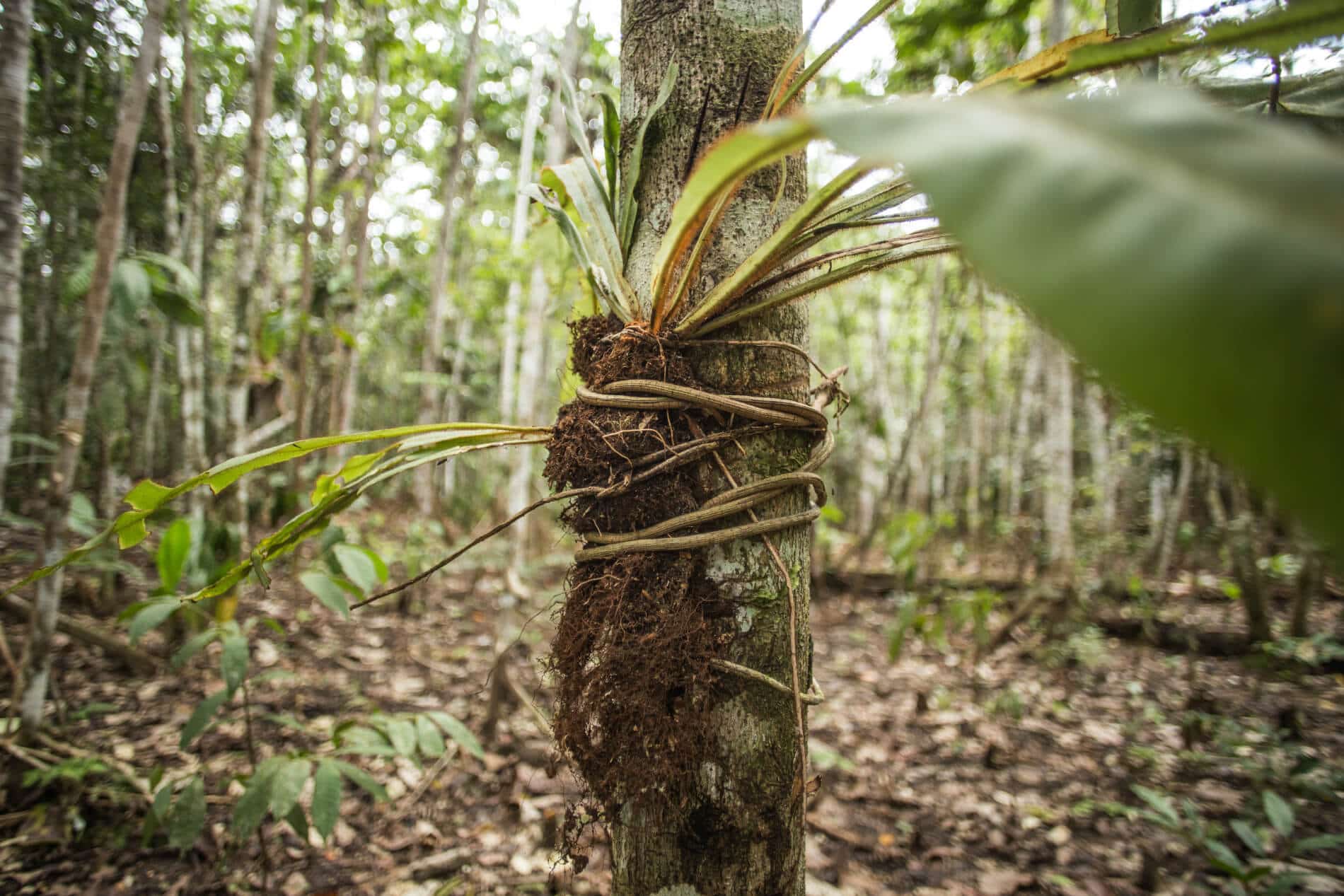
Medicinal plant epiphyte grafted in a newly established Healing Forest, village of Jorge Chavez, Galvez River. Photo: Tui Anandi / Mike van Kruchten / Xapiri.
The design for each Healing Forest agroforestry area is individualized by each healer and community. Some prefer to place the plants along winding paths in the forest while others favor a more centralized design.
The Matsés gave priority to communities that no longer have living resident healers.
Currently, the Matsés have established Healing Forests in nearly all (10) of their communities in Peru. The remaining two communities are set to be completed by spring 2019.
The value of the Healing Forest cannot be overstated as repositories of medicinal plants, training areas for young Matsés, and as community-initiated conservation areas.
For the global conservation movement, the Healing Forests that the Matsés have created stand at the pinnacle of successful local agroforestry-based conservation. Before the initiative, the Matsés elders’ knowledge and wisdom were indisputably on the verge of extinction. Five years later, the reality and the outlook for the future is completely different.
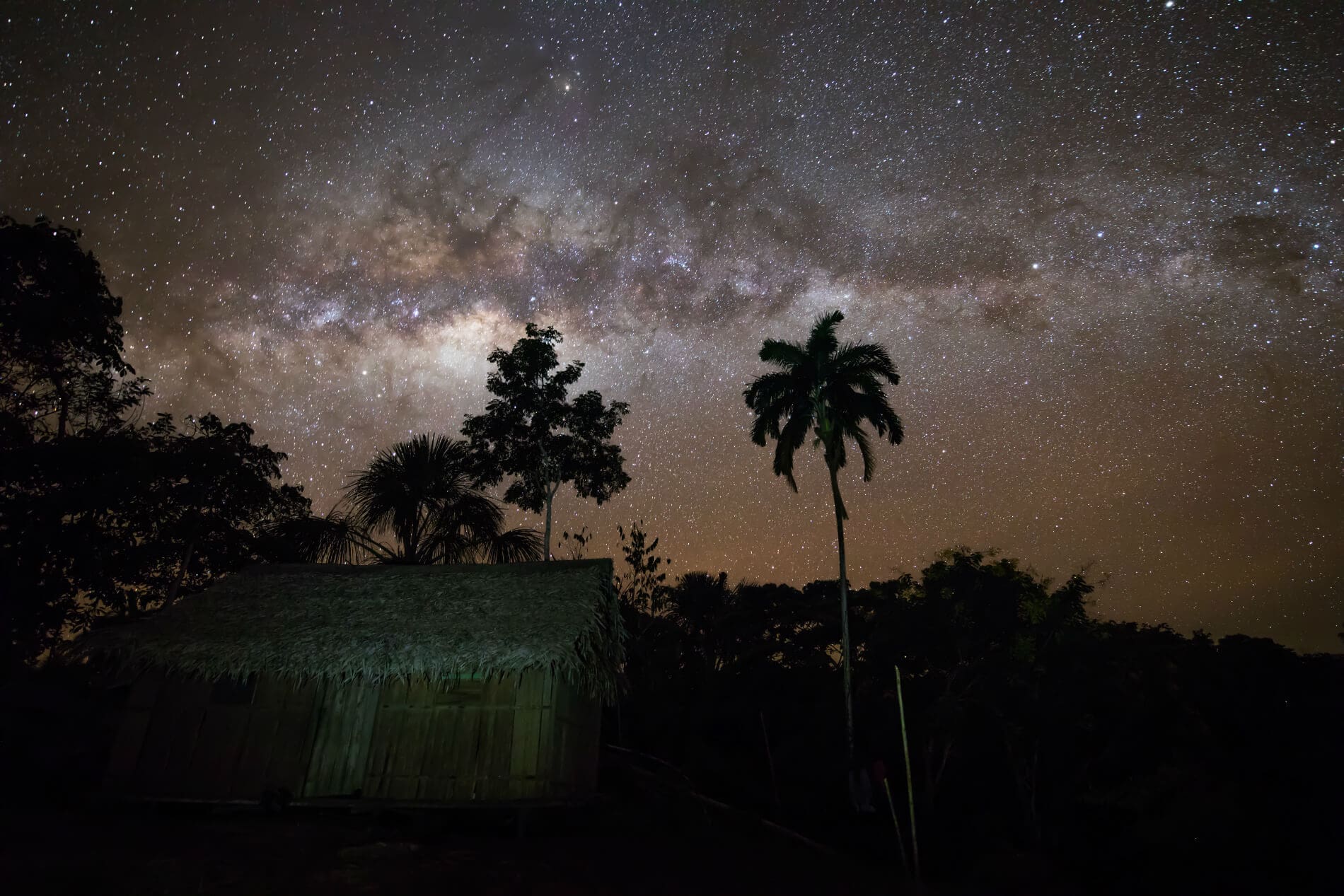
Matsés village at night. Photo: Tui Anandi / Mike van Kruchten / Xapiri.
“The healing forests and the encyclopedia have inspired the people to use our own medicine once again after being told for so many years that it should be forgotten,” said Segundo Reyna Perez, former Matsés chief of the village of Buen Peru and local coordinator of the apprentice program.
“Many Matsés are now learning plants to treat common ailments for their family. When they are out in the forest far from their villages, they are able to use the plants for remedies. When they are clearing their farms, they now leave the medicinal plants to grow instead of removing them as weeds.”
From the dozens of apprentices involved in creating Healing Forests, one or two in each community stood out above the rest, excelling in aptitude and interest. The final phase in restoring the Matsés traditional medicine system is to provide these emerging apprentices with support for further in-depth study and practice with the remaining elder plant masters across their territory.
One such advanced apprentice is Mariano Lopez Rengifo, from the village of Remoyacu–which no longer has a healer in residence. Mariano was selected by his peers to participate in the Healing Forest project led by visiting Matsés elder healer Alberto Bai.
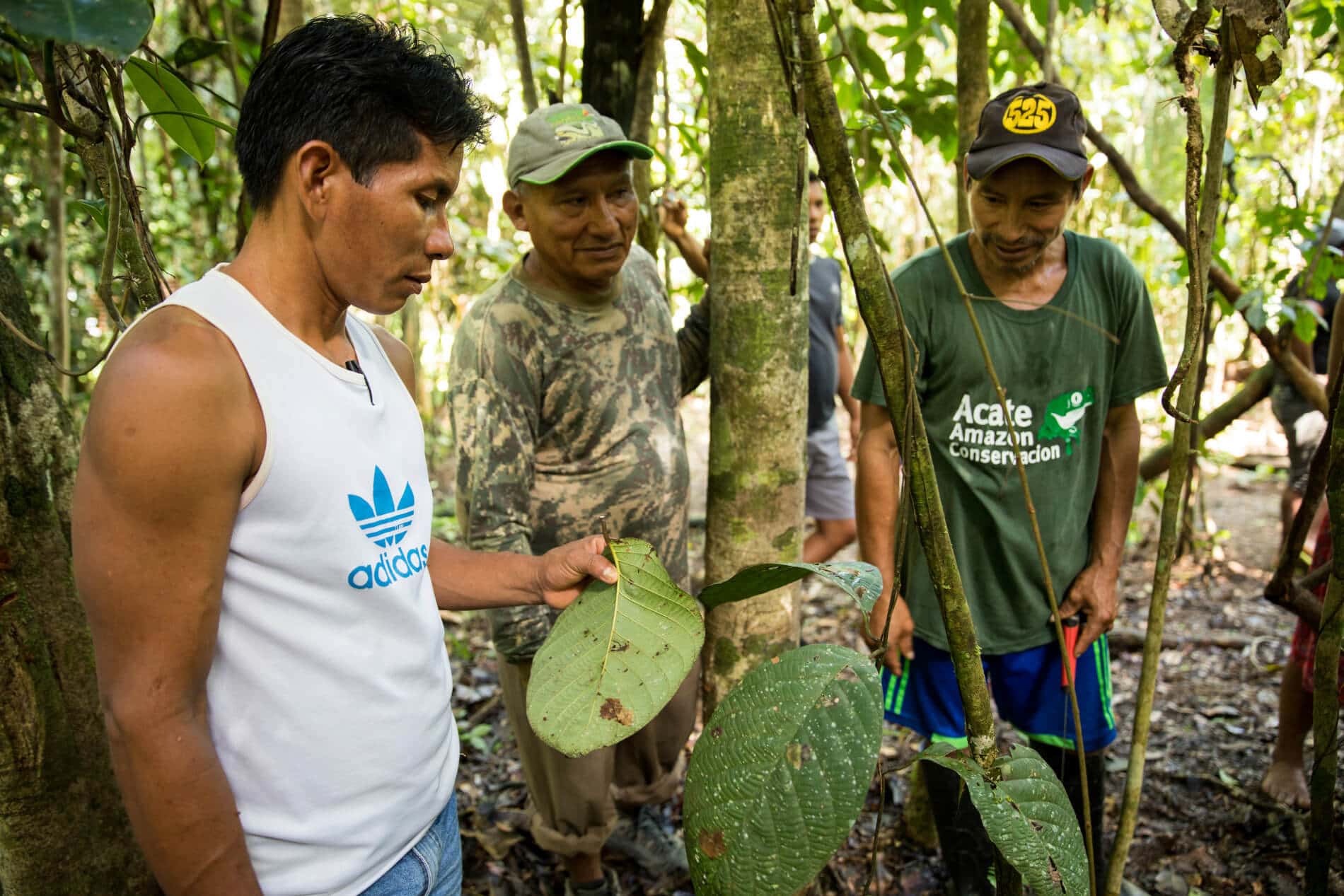
Advanced apprentice and project coordinator Mariano López Rengifo (L) examines a medicinal plant. Photo: Tui Anandi / Mike van Kruchten / Xapiri.
Mariano impressed everyone with his brilliance and his dazzling ability to identify and remember the medicinal plants taught to him by Alberto Bai. We were so intrigued by his story that we sat down with him to learn more.
Mariano told us that before studying with Maestro Alberto, he knew only two medicinal plants, one of which was used to treat dogs. He said that his apprenticeship with Alberto was an awakening. He indicated that he would like to continue learning from Master Alberto, saying to us:
“It takes time to become a shaman. Just as you (Dr. Chris) spent years in school learning to use pharmaceuticals, my university is the jungle.”
The Matsés decided that Mariano would be an ideal candidate to pilot the Advanced Internship program.
Mariano traveled to Puerto Alegre to study with Maestro Bai for one month. In that short time, he was able to identify and prepare medicines from over eighty different plants.
We subsequently hired Mariano as one of our staff members to coordinate the Healing Forest program with the elder healers.
In addition to using both volumes of the Encyclopedia, Mariano has created his own notebook where he records his notes from the teachings of the elder plant masters. His notebook currently contains entries on 800 plant medicines. After further training with Alberto Bai and other remaining elders, he hopes to return to his village of Buen Peru to become the resident healer, filling a long void.
At this moment, there are several more advanced apprentices like Mariano who are looking for support to continue their training.
It is important to understand that restoring a traditional healing system of such depth and complexity takes years, if not decades, to achieve. There are no shortcuts, video platforms or mobile apps that can take the place of the hard work of learning in the forest. The Matsés are proud of the progress over the last six years; but they also recognize that much work still has to be done before each village once again has at least one resident healer.

Indigenous Peoples are putting their bodies on the line and it's our responsibility to make sure you know why. That takes time, expertise and resources - and we're up against a constant tide of misinformation and distorted coverage. By supporting IC you're empowering the kind of journalism we need, at the moment we need it most.